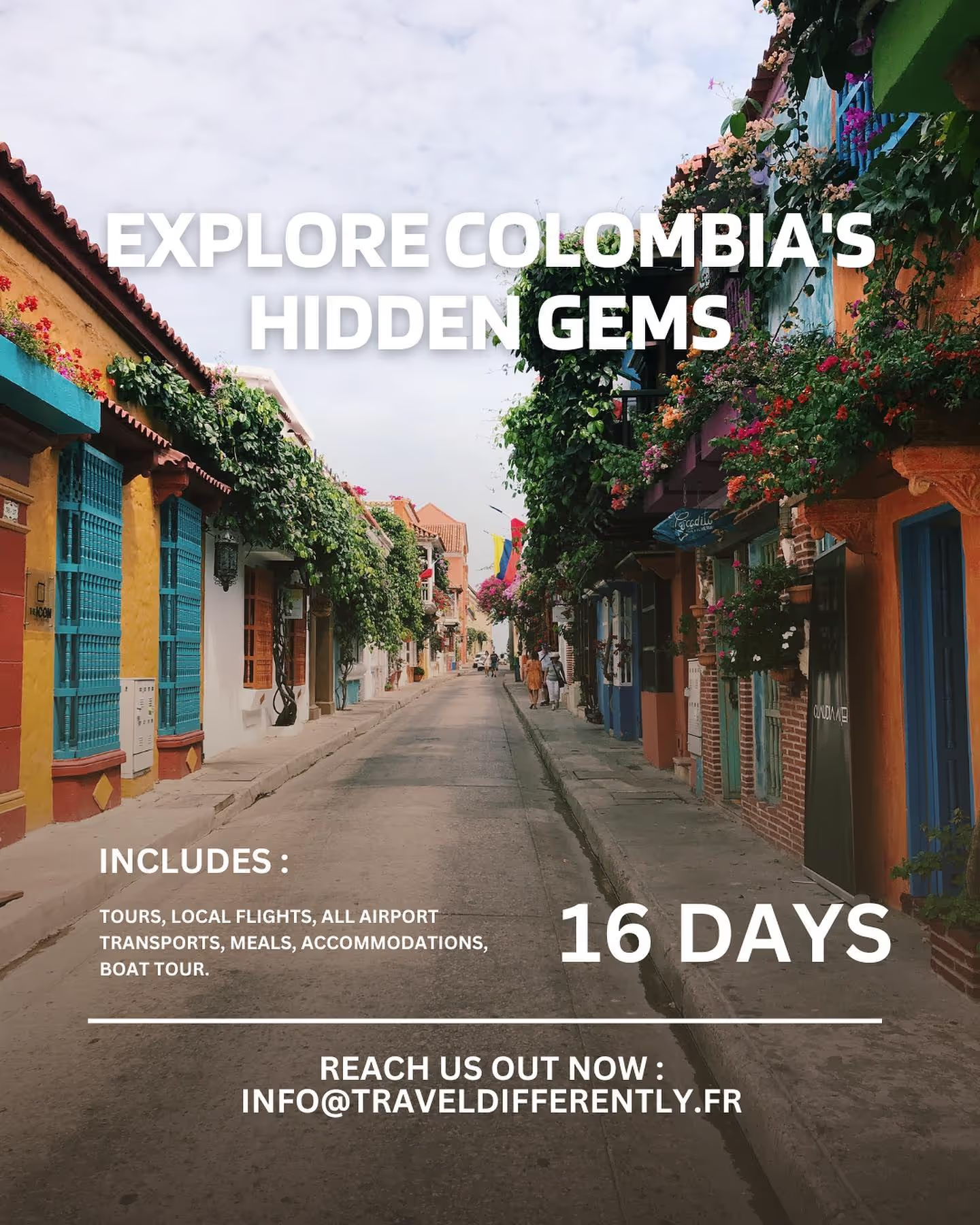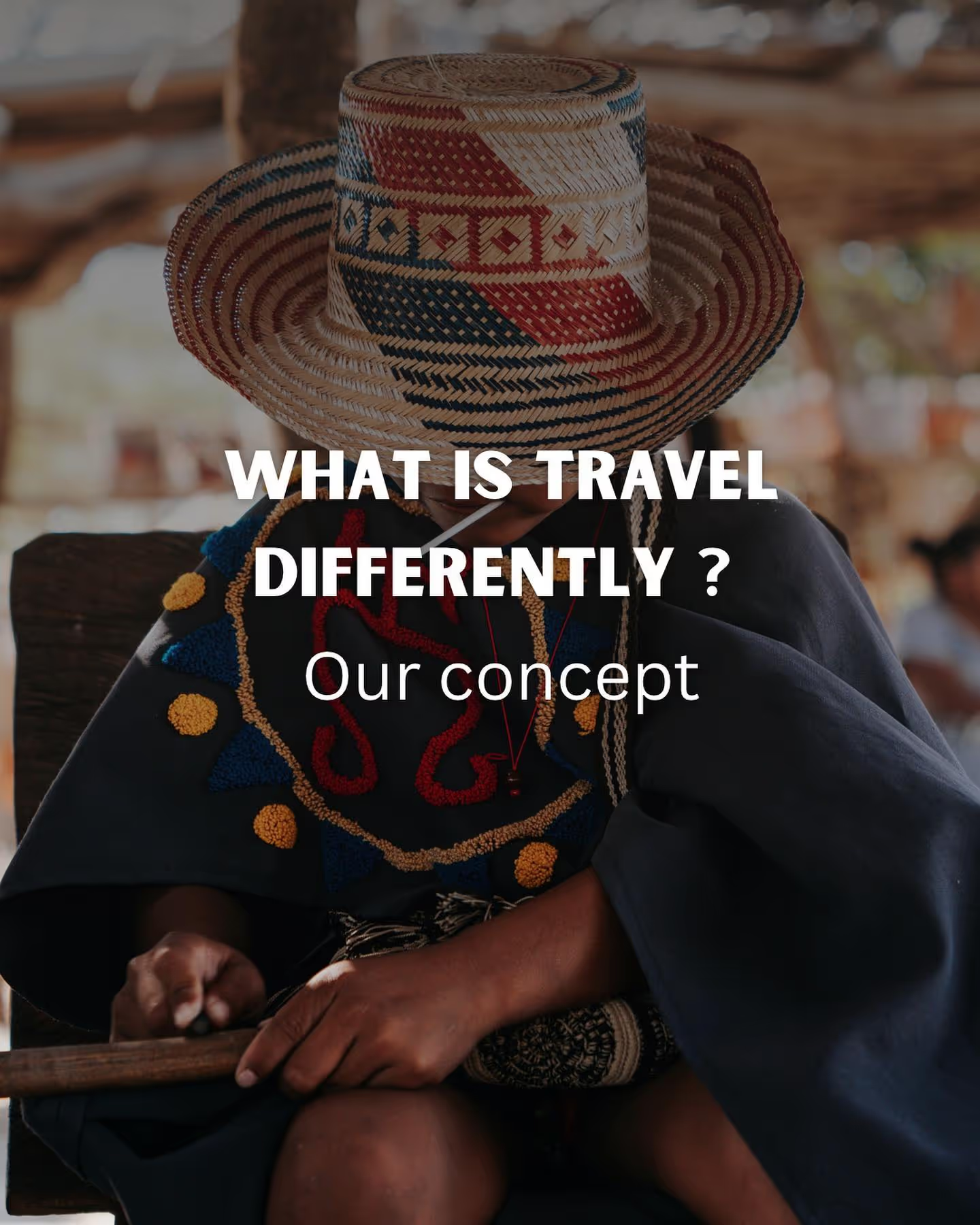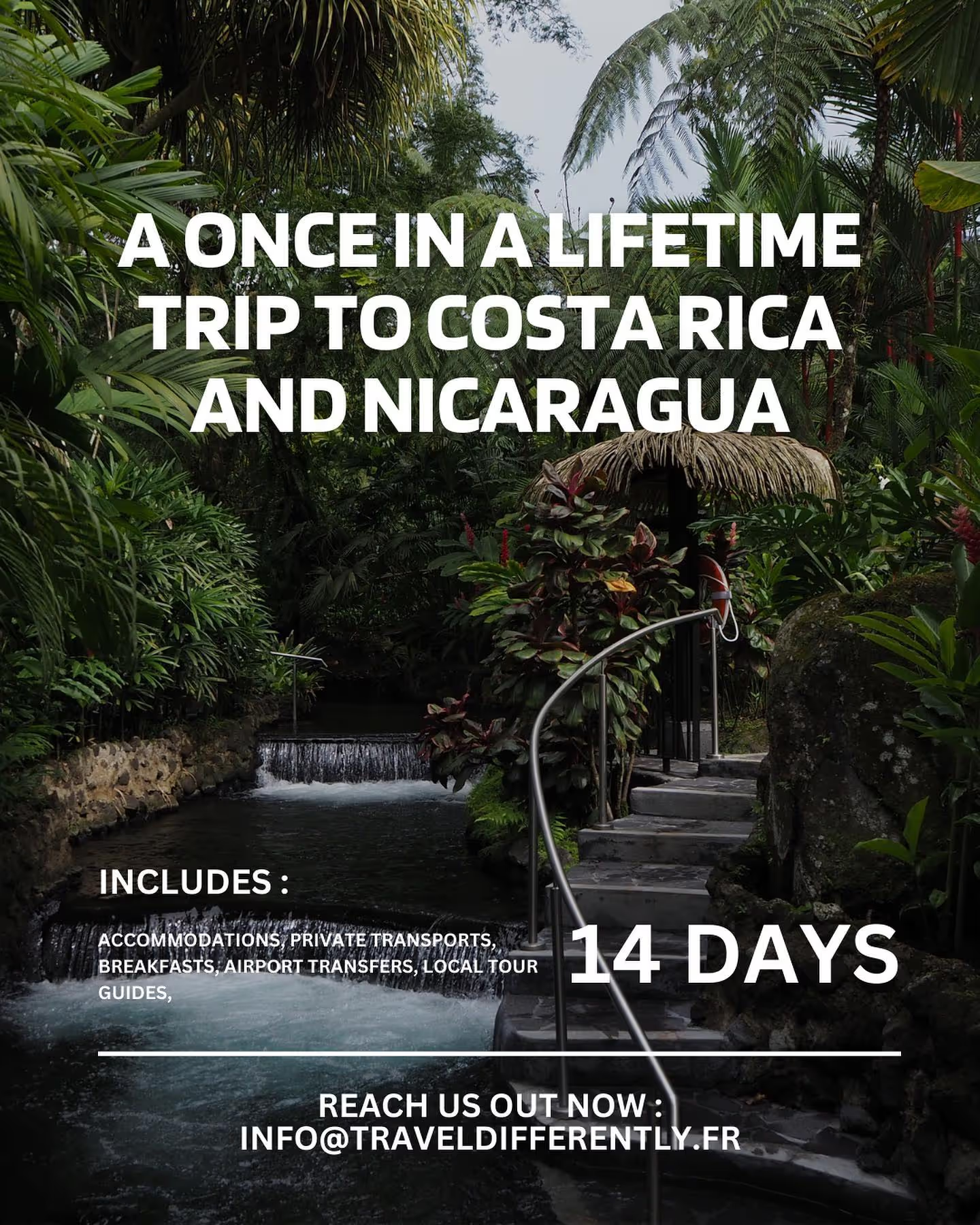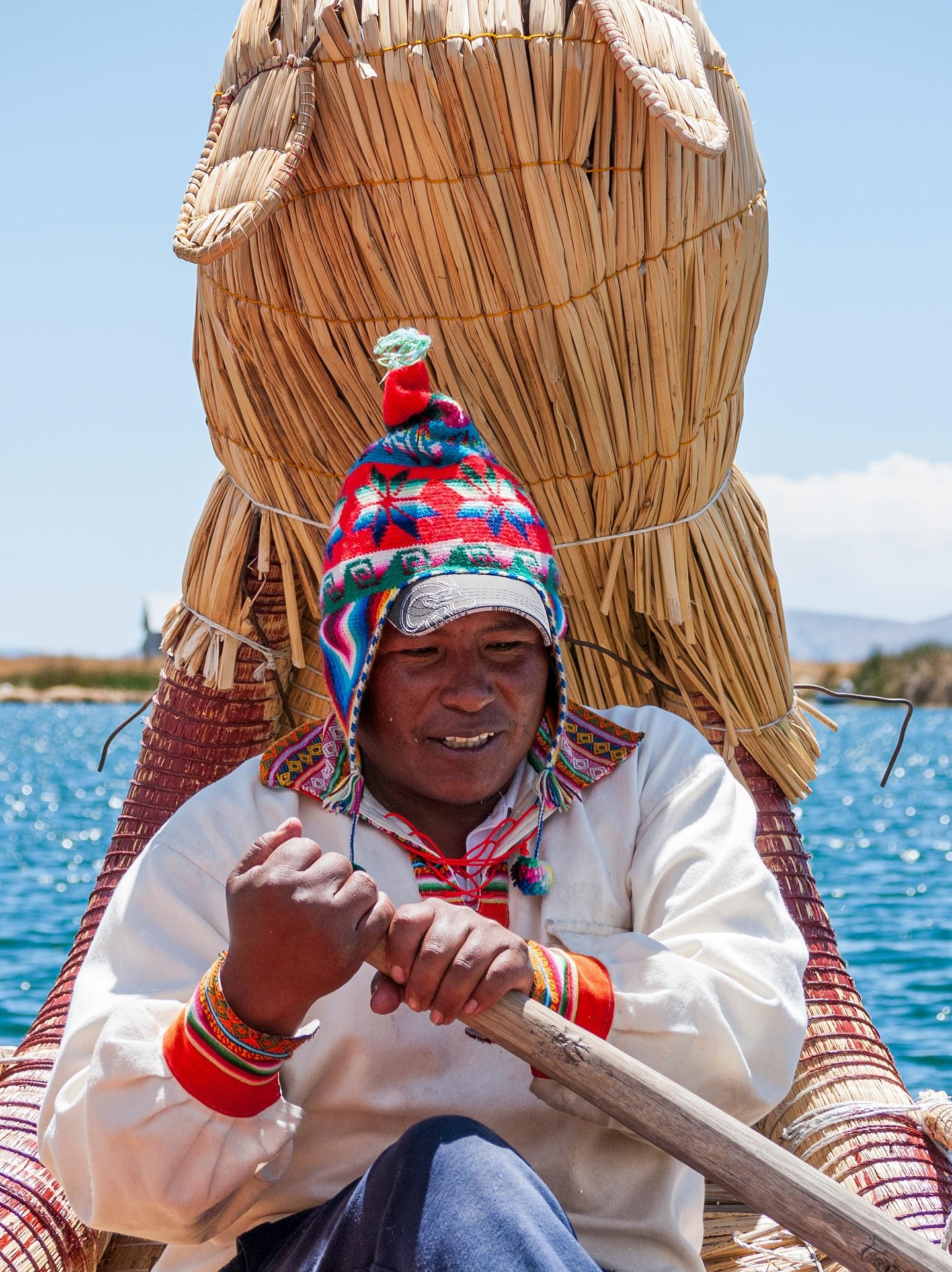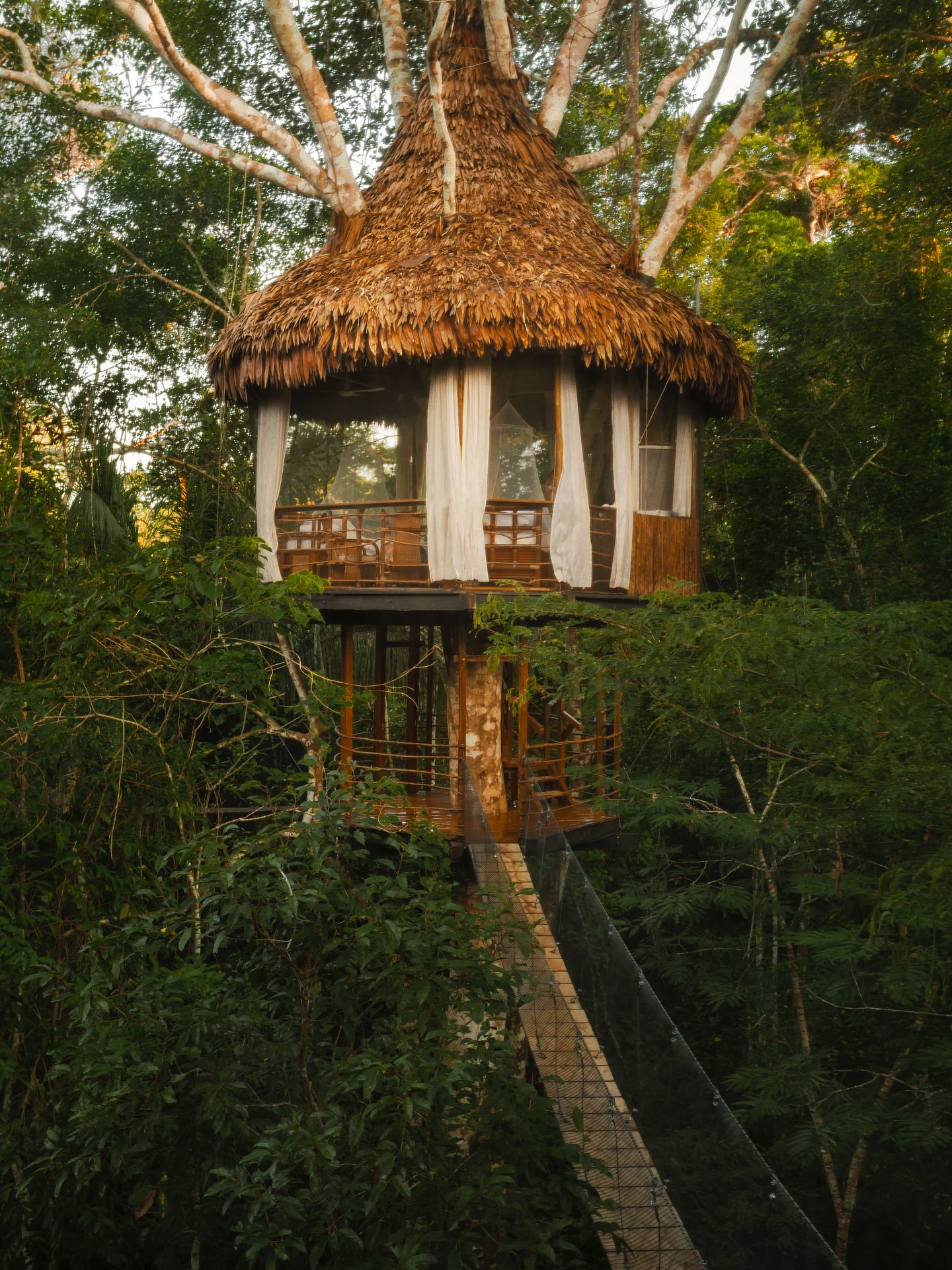Colombia's natural wonders span an extraordinary range of ecosystems that position this South American gem as one of Earth's most biodiverse destinations. From the wildlife-rich Amazon rainforest where pink dolphins swim alongside traditional canoes to the golden dunes of La Guajira Desert where indigenous Wayuu culture thrives unchanged for centuries, Colombia's natural wonders offer immersive travel experiences that transform visitors into passionate advocates for conservation. With convenient flights to Colombia from the UK now more accessible than ever, discovering these spectacular landscapes through sustainable tourism has become an achievable dream for eco-conscious adventurers.
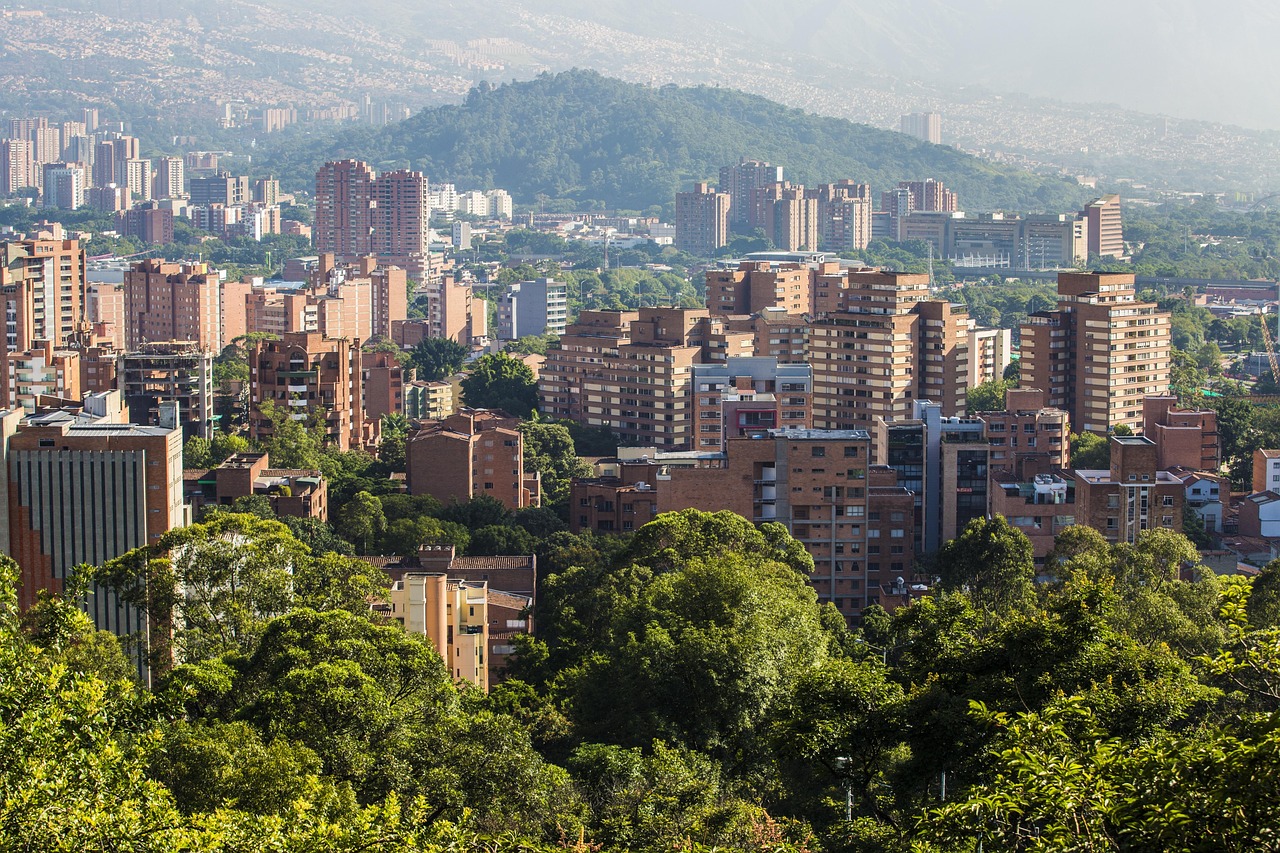
Understanding Colombia's Natural Wonders and Biodiversity
Colombia's natural wonders result from its unique geographical position bridging South and Central America, creating unparalleled ecological diversity across five distinct natural regions.
- The country harbors 10% of global biodiversity within less than 1% of Earth's surface.
- It includes 59 national parks, 12 biosphere reserves, and countless protected areas safeguarding critical habitats.
- Colombia leads the world in bird diversity with 1,900+ species, ranks second in plant diversity with 51,000+ species, and hosts more butterfly species than any other nation.
This biological wealth creates extraordinary opportunities for Colombia immersive travel that connect visitors directly with pristine nature while supporting local conservation efforts through responsible tourism practices.
Colombia Wildlife Tours: A Journey into the Amazon
Colombia wildlife tours in the Amazon region offer encounters with some of Earth's most spectacular creatures in their natural habitat. The Colombian Amazon, covering 483,000 square kilometers, represents one of the planet's last great wilderness areas where jaguars still roam freely, harpy eagles soar above the canopy, and thousands of species await scientific discovery. Leticia serves as the gateway for Colombia wildlife tours, strategically positioned where Colombia, Brazil, and Peru converge, creating unique opportunities to experience three distinct Amazonian cultures while exploring pristine rainforest.
Professional guides leading Colombia wildlife tours possess intimate knowledge of animal behavior patterns, enabling remarkable encounters with the Amazon's most iconic species. Pink river dolphins approach boats with surprising curiosity, their intelligence evident in playful interactions with respectful observers. Troops of squirrel monkeys leap through canopy branches while howler monkeys announce dawn with calls audible five kilometers away. Three-toed sloths hang motionless in cecropia trees, their slow movements perfectly adapted to avoid predator detection, while poison dart frogs display warning colors that have inspired indigenous arrow poisons for millennia.
Night excursions during Colombia wildlife tours reveal the Amazon's nocturnal realm where 80% of mammals become active after dark. Specialized equipment including UV flashlights illuminate fluorescent scorpions and tree frogs, while thermal imaging devices detect caimans lurking in blackwater tributaries. Indigenous guides share traditional knowledge about medicinal plants, demonstrating how forest communities have sustainably utilized biodiversity for thousands of years without depleting resources.
Colombia wildlife tours extend beyond simple observation to include citizen science opportunities where visitors contribute to ongoing research projects. Participants help document new species, monitor population trends, and support conservation initiatives directly benefiting local communities. For authentic Amazon experiences combining wildlife observation with cultural immersion, explore Calanoa eco-lodge's unforgettable adventures, where sustainable tourism directly supports rainforest protection and indigenous livelihoods.
Best time to visit:
- June–November → low water, better wildlife concentration
- High-water season → canoe trips through flooded forests
- Dry season → better trekking and terrestrial animal sightings
Each season offers a different way to experience Colombia’s incredible biodiversity.
Colombia Jungle Trekking: Adventures from Rainforest to Mountains
Colombia jungle trekking encompasses diverse ecosystems from lowland Amazon rainforest to cloud-shrouded Andean slopes, offering trekkers unparalleled variety in terrain, climate, and biodiversity. The country's extensive trail network includes ancient indigenous paths, colonial trade routes, and modern eco-trails designed to minimize environmental impact while maximizing immersive experiences. Colombia jungle trekking ranges from gentle day hikes suitable for families to challenging multi-day expeditions requiring technical skills and physical endurance.
The Lost City (Ciudad Perdida) trek represents Colombia jungle trekking at its most adventurous, leading through dense Sierra Nevada jungle to archaeological ruins predating Machu Picchu by 650 years. This five-day journey covers 44 kilometers through indigenous Kogi and Wiwa territories, crossing crystal-clear rivers, ascending stone staircases built centuries ago, and camping in jungle clearings where howler monkeys serve as dawn alarm clocks. The trek combines physical challenge with cultural immersion as indigenous guides share ancestral knowledge about the sacred landscape their communities have protected for generations.
Colombia jungle trekking in the Chocó biogeographic region offers encounters with one of Earth's most biodiverse ecosystems where rainfall exceeds 10,000 millimeters annually. Trails through this "biological hotspot" reveal endemic species including the golden poison frog, considered the world's most toxic animal, and spectacular birds like the harpy eagle and great green macaw. The challenging terrain requires experienced guides familiar with rapidly changing weather conditions, river crossings, and navigation through dense vegetation where GPS signals barely penetrate the canopy.
For those seeking Colombia jungle trekking combined with highland ecosystems, the Cocora Valley provides accessible trails through cloud forest ascending to páramo landscapes dominated by frailejones plants and Andean condors. The valley's famous wax palms, reaching 60 meters height, create surreal landscapes especially magical when morning mists swirl through their towering fronds. Multiple trail options accommodate different fitness levels, from two-hour valley walks to full-day circuits reaching 3,000 meters elevation with panoramic views across the Central Cordillera.
Colombia jungle trekking opportunities extend to lesser-known destinations offering solitude and pristine nature without crowds. Discover our guide to Colombia's hidden gems including Caño Cristalitos, where jungle trekking leads to crystalline rivers displaying rainbow colors from aquatic plants, natural swimming pools carved into ancient rock, and waterfalls accessible only on foot. These alternative trekking destinations provide Colombia immersive travel experiences away from popular tourist circuits while supporting community-based conservation initiatives.
Safety during Colombia jungle trekking requires proper preparation including appropriate gear for humid conditions, protection against insects and sun, and awareness of potential hazards from wildlife to weather. Before embarking on jungle adventures, consult our comprehensive guide on what to pack for Colombia, covering essential equipment for trekking in diverse ecosystems from rainforest humidity to high-altitude cold.
{{component-create-my-trip="/"}}
Colombia Desert Adventure: The Golden Dunes of La Guajira
Colombia desert adventure in La Guajira Peninsula offers experiences dramatically different from the country's lush jungles and mountains, showcasing landscapes where massive sand dunes meet turquoise Caribbean waters under relentless sun. This arid region, receiving only 250 millimeters annual rainfall, creates South America's driest desert environment where temperatures regularly exceed 40°C and survival requires intimate knowledge of scarce water sources and shade patterns. Colombia desert adventure here means embracing extremes while discovering how indigenous Wayuu communities have thrived in these challenging conditions for centuries.
The journey to Punta Gallinas, continental South America's northernmost point, epitomizes Colombia desert adventure with hours traversing roadless terrain in 4x4 vehicles, navigating between towering dunes and salt flats where mirages blur reality. Upon arrival, the reward justifies the challenging journey as golden sand mountains plunge directly into crystal-clear waters, creating otherworldly vistas that photographers dream about capturing. Swimming where desert meets sea provides surreal experiences as warm Caribbean waters offer relief from desert heat while pelicans dive for fish just meters away.
Colombia desert adventure activities in La Guajira cater to thrill-seekers and cultural enthusiasts alike. Sandboarding down massive dunes delivers adrenaline rushes as riders reach speeds exceeding 60 kilometers per hour on specially designed boards. Kitesurfing at Cabo de la Vela takes advantage of consistent trade winds that make this remote location one of South America's premier destinations for wind sports. Mountain biking across desert terrain challenges riders with soft sand, rocky outcrops, and extreme temperatures requiring careful planning and abundant water supplies.
Cultural dimensions of Colombia desert adventure involve respectful engagement with Wayuu communities who comprise 45% of La Guajira's population. These indigenous people maintain traditional lifestyles including transhumant pastoralism, moving goat herds between seasonal pastures following ancient patterns. Wayuu women create intricate mochilas bags using techniques passed through generations, with each pattern containing symbolic meanings related to mythology, clan identity, and natural phenomena. Participating in traditional celebrations offers Colombia immersive travel experiences where visitors learn about Wayuu cosmology, conflict resolution systems, and remarkable desert survival strategies.
Colombia desert adventure extends beyond daylight hours as La Guajira offers some of South America's most spectacular stargazing opportunities. The absence of light pollution combined with minimal atmospheric moisture creates perfect conditions for astronomical observation. The Milky Way appears so bright it casts shadows across dunes while southern hemisphere constellations invisible from Europe reveal themselves in stunning clarity. Many Colombia desert adventure tours include nighttime activities like camping under stars, traditional Wayuu storytelling sessions, and sunrise photography capturing the desert's transformation as first light paints dunes in gold and orange hues.
Wildlife adapted to extreme conditions adds another dimension to Colombia desert adventure. Caribbean flamingos gather in thousands at coastal lagoons, their pink coloration intensified by diet rich in brine shrimp. Desert foxes, iguanas, and rattlesnakes have evolved remarkable adaptations for water conservation and temperature regulation. During brief rainy periods, the desert explodes with life as dormant seeds germinate, creating temporary carpets of wildflowers that attract clouds of butterflies and migrating birds.
Caribbean Coastal Wonders: Where Colombia's Natural Beauty Meets the Sea
Colombia's natural wonders along the Caribbean coast encompass coral reefs, mangrove forests, tropical beaches, and coastal mountains creating diverse marine and terrestrial ecosystems. The 1,600-kilometer coastline from Panama to Venezuela includes some of Colombia's most accessible yet spectacular natural wonders, where travelers can experience pristine beaches, colonial history, and vibrant culture within short distances. This region demonstrates how Colombia's natural wonders support both biodiversity conservation and sustainable tourism development benefiting local communities.
Tayrona National Park exemplifies Colombia's natural wonders where jungle-covered Sierra Nevada mountains plunge into the Caribbean Sea, creating spectacular beaches framed by massive granite boulders. Ancient stone paths built by the Tairona civilization lead through forests harboring 300 bird species, howler monkeys, and even jaguars, before emerging at pristine beaches like Cabo San Juan and La Piscina. The park's coral reefs support 110 fish species while beaches provide critical nesting habitat for four sea turtle species, making Tayrona essential for marine conservation efforts.
The Rosario and San Bernardo Coral Islands National Park protects one of Colombia's natural wonders crucial for Caribbean marine biodiversity. These 27 islands surrounded by coral reefs offer exceptional snorkeling and diving experiences with 70% live coral coverage supporting parrotfish, angelfish, moray eels, and nurse sharks. Mangrove forests surrounding islands serve as nurseries for juvenile fish while providing habitat for frigate birds, pelicans, and migratory species. Colombia immersive travel experiences here include staying with fishing communities learning traditional sustainable fishing practices passed through generations.
San Andrés and Providencia archipelago, part of the Seaflower Biosphere Reserve, showcases Colombia's natural wonders in the world's third-largest barrier reef system. The "Sea of Seven Colors" phenomenon results from varying depths and coral formations creating a spectrum from crystalline shallow waters to deep sapphire channels. These remote islands offer Colombia wildlife tours focused on marine species including eagle rays, reef sharks, sea turtles, and seasonal whale sharks. The Old Providence McBean Lagoon National Natural Park combines mangroves, seagrass beds, and coral reefs in one protected area demonstrating ecosystem connectivity.
Andean Highlands: Mountain Ecosystems Among Colombia's Natural Wonders
Colombia's natural wonders in the Andean highlands encompass three distinct mountain ranges (cordilleras) creating diverse ecosystems from coffee plantations to snow-capped peaks. These mountains generate Colombia's incredible biodiversity through elevation gradients that compress tropical, temperate, and alpine zones within short distances. The Andes represent crucial water sources for millions while supporting endemic species evolved in isolation on mountain "islands" surrounded by different ecosystems.
The Coffee Cultural Landscape, UNESCO World Heritage site spanning 141,120 hectares, demonstrates how human activity can enhance rather than diminish natural wonders when practiced sustainably. Coffee cultivation between 1,200-2,000 meters elevation maintains forest cover while supporting incredible biodiversity including 500+ bird species. Traditional shade-grown coffee practices preserve native trees providing habitat for wildlife while preventing erosion on steep slopes. For sustainable accommodation experiencing these landscapes, consider El Nido del Cóndor Ecolodge, perfectly positioned for exploring coffee country's natural and cultural attractions.
Páramo ecosystems above 3,000 meters represent unique Colombia natural wonders found only in tropical mountains from Costa Rica to northern Peru. These high-altitude grasslands dominated by frailejones plants act as massive water sponges, capturing moisture from clouds and slowly releasing it to feed rivers supplying 70% of Colombia's population. Endemic species including spectacled bears, mountain tapirs, and Andean condors depend on páramo habitats increasingly threatened by climate change and agricultural expansion. Colombia jungle trekking often traverses these ecosystems, offering encounters with species found nowhere else on Earth.
Los Nevados National Park protects Colombia's natural wonders including active volcanoes and glacial peaks exceeding 5,000 meters elevation. Trekking routes traverse complete elevation gradients from cloud forests through páramos to permanent snowfields, demonstrating climate zones typically separated by thousands of kilometers latitude. The park's thermal features including hot springs and fumaroles create unique microhabitats supporting specialized organisms adapted to extreme conditions. Climate change impacts are visible here as glaciers retreat annually, making visits to these ice-capped peaks increasingly precious experiences.
Colombia Eco Travel Tips: How to Travel Responsibly
Colombia eco travel tips begin with choosing accommodations and tour operators committed to sustainable practices benefiting local communities and protecting natural wonders. Look for certifications from recognized programs including Rainforest Alliance, Green Globe, or Colombia's National Tourism Quality Standards that verify environmental and social responsibility. Small, locally-owned lodges often provide more authentic experiences while ensuring tourism revenue remains in communities rather than flowing to international corporations.
Transportation represents a significant component of Colombia eco travel tips as the country's size and topography often require flights between regions. Offset carbon emissions through verified programs, choose direct flights when possible, and maximize time in each destination rather than rushing between multiple locations. Within regions, support local transportation including collective taxis, public buses, and bicycle rentals that reduce individual environmental impact while providing income for local drivers and operators.
Colombia eco travel tips for wildlife observation emphasize respect for animals and habitats through maintaining appropriate distances, avoiding flash photography, and never feeding wild animals. Choose Colombia wildlife tours led by certified guides who understand animal behavior and enforce ethical viewing practices. Support conservation projects through entrance fees to protected areas, donations to local NGOs, and purchasing products from communities engaged in conservation activities. Report wildlife trafficking or abuse to authorities as Colombia struggles with illegal pet trade threatening endangered species.
Cultural sensitivity forms essential Colombia eco travel tips when visiting indigenous communities or participating in traditional activities. Always request permission before photographing people, especially in traditional dress or during ceremonies. Purchase handicrafts directly from artisans ensuring fair compensation for their work. Learn basic Spanish phrases and regional greetings showing respect for local culture. Dress modestly in rural areas and religious sites. Understand that time concepts differ from Western punctuality, with relationships prioritized over schedules.
Colombia eco travel tips for minimizing waste include carrying reusable water bottles with purification systems suitable for varying water quality, collapsible containers for food storage, cloth bags for shopping, and refusing single-use plastics whenever possible. Many Colombian cities now have water refill stations while eco-conscious businesses offer discounts for customers bringing reusable containers. Participate in beach cleanups or conservation activities giving back to places you visit. Properly dispose of waste including batteries and electronics that require special handling in developing countries.
Responsible souvenir shopping represents important Colombia eco travel tips supporting conservation and communities. Avoid products made from endangered species including turtle shells, coral, exotic woods, or animal parts. Purchase sustainable alternatives like coffee, cacao, handicrafts, and textiles directly from producers. Verify authenticity of indigenous crafts as mass-produced imitations undercut artisan livelihoods. Support social enterprises employing vulnerable populations or funding conservation projects through product sales.
For comprehensive preparation ensuring responsible travel, explore our complete Colombia travel guide featuring detailed information about sustainable tourism options across all regions. Additionally, review our selection of best eco-lodges in South America for accommodation options prioritizing environmental protection and community development.
Colombia's Natural Wonders: Why Now is the Best Time to Visit
Colombia's natural wonders have become increasingly accessible due to improved security, infrastructure development, and growing environmental awareness making now the optimal time for responsible travelers to experience this megadiverse country. Peace agreements signed in 2016 opened previously inaccessible regions containing pristine ecosystems and endemic species unknown to science. New national parks protect critical habitats while community-based tourism initiatives provide sustainable alternatives to extractive industries threatening Colombia's natural wonders.
Climate change makes experiencing Colombia's natural wonders increasingly urgent as ecosystems face unprecedented challenges. Glaciers crowning Andean peaks retreat annually with scientists predicting complete disappearance within decades. Coral bleaching events impact Caribbean reefs while extreme weather patterns disrupt traditional rainfall cycles affecting both wildlife and communities. Rising temperatures push species upslope, compressing habitat zones and increasing extinction risks for endemic species with nowhere to migrate. Visiting Colombia's natural wonders now supports conservation efforts through tourism revenue while experiencing ecosystems that may dramatically change within our lifetimes.
Infrastructure improvements facilitate access to Colombia's natural wonders while maintaining ecological integrity through better planning and regulation. New airports in regional cities reduce travel times to remote destinations. Improved roads balance accessibility with environmental protection through engineering minimizing habitat fragmentation. Visitor centers at protected areas provide educational resources enhancing understanding and appreciation of Colombia's natural wonders. Digital connectivity enables real-time sharing of experiences inspiring others to visit responsibly while supporting conservation through social media advocacy.
Colombia immersive travel opportunities have expanded as communities recognize tourism's potential for sustainable development preserving natural and cultural heritage. Indigenous groups increasingly control tourism in their territories, ensuring authentic experiences while maintaining traditional practices. Former conflict zones now offer unique Colombia wildlife tours in areas where limited human presence allowed nature to flourish undisturbed for decades. Scientific research stations welcome visitors contributing to citizen science projects advancing understanding of biodiversity and climate change impacts.
International recognition of Colombia's natural wonders drives conservation momentum making visits increasingly impactful. UNESCO designations for sites like Los Katios National Park and Malpelo Island raise global awareness while providing frameworks for protection. International NGOs partner with Colombian organizations implementing landscape-scale conservation connecting protected areas through biological corridors. Tourism revenue demonstrates economic value of intact ecosystems, convincing governments and communities to prioritize conservation over short-term extractive exploitation.
Planning Your Journey Through Colombia's Natural Wonders
Experiencing Colombia's natural wonders requires careful planning balancing ambitious exploration with responsible travel practices minimizing environmental impact while maximizing positive contributions to conservation and communities. Colombia's complex geography means single trips cannot encompass all natural wonders, making multiple visits or extended stays necessary for comprehensive exploration. Focus on specific regions allowing deeper immersion rather than superficial coverage of multiple destinations.
Seasonal variations significantly impact experiences of Colombia's natural wonders with different phenomena occurring throughout the year. Dry seasons (December-March, July-August) facilitate Colombia jungle trekking and mountain climbing but coincide with Colombian holiday periods increasing crowds and prices. Wet seasons offer unique opportunities like flooded forest exploration in the Amazon and spectacular waterfalls in mountain regions, though some trails become impassable. Transitional periods often provide optimal conditions with moderate weather and fewer tourists.
Budget considerations for experiencing Colombia's natural wonders vary dramatically between backpacker-friendly options and luxury eco-lodges, though mid-range alternatives provide excellent value combining comfort with sustainability. Colombia wildlife tours with specialized guides and equipment cost more than independent exploration but provide superior experiences and conservation contributions. Remote destinations like La Guajira require 4x4 transportation and guides increasing costs but ensuring safety and cultural sensitivity. Investment in quality gear proves economical for multiple Colombia jungle trekking adventures while supporting responsible manufacturing practices.
Health and safety preparations for exploring Colombia's natural wonders include vaccinations (yellow fever required for some regions), malaria prophylaxis for lowland areas, and altitude acclimatization for mountain destinations. Comprehensive travel insurance covering adventure activities and emergency evacuation proves essential given remote location of many natural wonders. Physical fitness requirements vary from gentle wildlife observation to demanding multi-day treks requiring training and preparation. Mental preparation for basic conditions in remote areas ensures enjoyment rather than disappointment when experiencing authentic wilderness.
Conservation Challenges and Opportunities in Colombia's Natural Wonders
Colombia's natural wonders face mounting pressures from deforestation, mining, agriculture, and climate change requiring urgent conservation action supported by responsible tourism. Annual forest loss exceeds 170,000 hectares with cattle ranching representing the primary driver followed by illegal crops, logging, and infrastructure development. Protected areas suffer from insufficient funding and staff to prevent encroachment while surrounding buffer zones lack management preventing edge effects degrading core habitats.
Mining concessions overlap with many of Colombia's natural wonders creating conflicts between short-term economic gains and long-term ecosystem services including water provision, carbon sequestration, and biodiversity conservation. Illegal gold mining pollutes rivers with mercury while destroying riparian forests critical for aquatic species. Coal and oil extraction fragment habitats and generate greenhouse gases accelerating climate change impacts on vulnerable ecosystems. Colombia immersive travel experiences in threatened areas demonstrate alternative economic values supporting arguments against extractive industries.
Community-based conservation initiatives protecting Colombia's natural wonders show promising results when local people benefit directly from ecosystem preservation. Payment for ecosystem services programs compensate landowners maintaining forest cover protecting watersheds. Ecotourism provides alternative livelihoods for former hunters and loggers who become guides and conservationists. Indigenous territories with secure land rights show lower deforestation rates than government-protected areas demonstrating effectiveness of traditional management systems. Supporting these initiatives through Colombia eco travel tips ensures tourism contributes to rather than threatens conservation efforts.
Scientific research in Colombia's natural wonders continues revealing extraordinary biodiversity with new species discovered regularly, highlighting importance of preservation before unknown species disappear forever. Recent discoveries include new poison frogs, orchids, and even mammals demonstrating how much remains unknown about Colombia's natural wonders. Citizen science programs engage visitors in data collection contributing to biodiversity inventories and climate change monitoring. Research stations welcome volunteers assisting with projects from bird banding to camera trap monitoring providing Colombia immersive travel experiences advancing scientific knowledge.
Cultural Connections to Colombia's Natural Wonders
Indigenous cosmologies interweave with Colombia's natural wonders creating sacred landscapes where physical and spiritual worlds intersect through mountains, rivers, and forests holding deep cultural significance. The Sierra Nevada's four indigenous groups consider themselves "Elder Brothers" responsible for maintaining cosmic balance through rituals performed at sacred sites throughout their territory. Amazonian peoples navigate forest pharmacies containing thousands of medicinal plants whose properties remain largely unknown to Western science. Understanding these connections enriches Colombia immersive travel beyond simple nature observation to profound cultural exchange.
Traditional ecological knowledge accumulated over millennia provides crucial insights for managing Colombia's natural wonders in face of modern challenges including climate change and habitat degradation. Indigenous agricultural practices like chagras (forest gardens) maintain biodiversity while producing food sustainably. Traditional calendar systems based on natural phenomena guide planting, harvesting, and hunting ensuring resource regeneration. Fire management practices create habitat mosaics supporting greater species diversity than uniform protection. Incorporating traditional knowledge into conservation strategies improves outcomes while respecting cultural rights.
Afro-Colombian communities along Pacific and Caribbean coasts maintain distinct relationships with Colombia's natural wonders reflected in music, cuisine, and spiritual practices. Traditional fishing practices using lunar cycles and seasonal indicators ensure sustainable harvests. Medicinal plant knowledge treats ailments using forest resources. Oral histories preserve ecological information about species distributions, climate patterns, and natural disasters informing modern conservation planning. Colombia eco travel tips should include supporting these communities through purchasing traditional products and participating in cultural activities generating income for conservation.
Campesino (peasant farmer) communities throughout Colombia developed intimate knowledge of local ecosystems through generations of observation and experimentation creating sustainable agricultural systems adapted to specific conditions. Coffee farmers maintain shade trees supporting biodiversity while preventing erosion. High-altitude potato varieties preserve genetic diversity crucial for food security. Traditional water management systems efficiently distribute scarce resources. Supporting these communities through fair trade purchases and agrotourism ensures continuation of practices benefiting both people and Colombia's natural wonders.
Future Visions for Colombia's Natural Wonders
Colombia's natural wonders stand at a crossroads where decisions made today determine whether future generations experience pristine ecosystems or degraded landscapes existing only in photographs and memories. Optimistic scenarios envision expanded protected areas connected through biological corridors allowing species migration adapting to climate change. Sustainable tourism generates sufficient revenue supporting conservation while providing dignified livelihoods for local communities. International cooperation channels resources toward protection rather than exploitation. Environmental education creates new generations valuing Colombia's natural wonders above short-term economic gains.
Technology offers tools for better protecting Colombia's natural wonders through satellite monitoring detecting deforestation in real-time, drones surveying remote areas efficiently, and artificial intelligence analyzing patterns predicting threats before irreversible damage occurs. Mobile applications enable visitors to identify species, report wildlife sightings, and access information enhancing Colombia immersive travel experiences while contributing to citizen science databases. Virtual reality allows people worldwide to experience Colombia's natural wonders inspiring support for conservation even without physical visits. Blockchain technology ensures transparency in conservation funding preventing corruption diverting resources from protection efforts.
Climate adaptation strategies for Colombia's natural wonders include establishing elevational corridors allowing species migration, protecting climate refugia where conditions remain stable, and assisting migration for species unable to disperse naturally. Ecosystem restoration recovers degraded habitats increasing resilience against extreme weather events. Green infrastructure in cities reduces pressure on natural areas while providing urban ecosystem services. International cooperation addresses transboundary conservation challenges as Colombia's natural wonders connect with ecosystems throughout South America requiring coordinated protection efforts.
Final Reflections: Your Role in Protecting Colombia's Natural Wonders
Every visitor to Colombia's natural wonders becomes part of either their protection or degradation through choices made before, during, and after travel. Selecting responsible tour operators, respecting wildlife and communities, minimizing waste, and sharing experiences responsibly creates positive impacts extending far beyond individual trips. Colombia immersive travel transforms participants into ambassadors advocating for conservation through stories, photographs, and continued support for protection efforts.
Colombia's natural wonders offer more than beautiful landscapes and wildlife encounters; they provide opportunities for personal transformation through connection with nature and cultures maintaining harmonious relationships with Earth's life-support systems. Whether tracking jaguars through Amazon rainforest, sandboarding down Guajira dunes, or trekking to Lost City through jungle, these experiences create lasting memories and commitments to conservation. The magic lies not just in what you see but how these encounters change your perspective on humanity's relationship with nature.
The time to experience Colombia's natural wonders is now, while ecosystems remain relatively intact and communities maintain traditional knowledge. Each responsible visit supports conservation through economic incentives, scientific contributions, and advocacy inspiring others to visit and protect these remarkable places. Colombia doesn't offer just another vacation destination; it provides transformative experiences connecting travelers with some of Earth's most spectacular natural wonders while contributing to their preservation for future generations.
Ready to discover Colombia's natural wonders through wildlife tours, jungle trekking, and desert adventures? Start planning your Colombia immersive travel experience today, knowing your journey supports conservation of irreplaceable ecosystems and cultures. From Amazon rainforests to Caribbean reefs, from Andean peaks to Guajira deserts, Colombia's natural wonders await those ready to explore responsibly, contributing to protection of our planet's precious biodiversity heritage.
Frequently Asked Questions About Colombia’s Natural Wonders
What are Colombia’s most famous natural wonders?
Colombia is home to breathtaking landscapes such as the Amazon rainforest, the rainbow-colored Caño Cristales River, the Guajira Desert, the Cocora Valley with its giant wax palms, and the Caribbean coastline of Tayrona National Park. Each destination showcases the country’s extraordinary biodiversity and cultural richness.
When is the best time to experience Colombia wildlife tours?
The Amazon region can be visited year-round, but the best time for Colombia wildlife tours is from June to November, when lower water levels attract animals to visible areas. If you want a mix of nature and comfort, consider staying at Calanoa eco-lodge for a responsible rainforest experience.
Is the Lost City trek in Colombia difficult?
Yes, the Lost City trek is considered a challenging jungle expedition. Covering 44 kilometers in humid and rugged terrain, it requires good fitness and preparation. The reward is reaching one of Colombia’s most fascinating archaeological wonders, accessible only through this immersive jungle journey.
What eco travel tips should I follow in Colombia?
To travel responsibly in Colombia:
- Choose eco-lodges such as El Nido del Cóndor.
- Minimize plastic use and pack reusable items.
- Respect Indigenous and local communities.
- Prepare properly with our guide on what to pack for Colombia.
How many national parks are in Colombia?
Colombia has 59 national parks protecting diverse ecosystems from the Amazon to the Caribbean. These include jungle reserves, páramo highlands, coral reefs, and desert landscapes. To start planning your visit, explore our Colombia travel guide.
Where can I find the best eco-lodges in Colombia and South America?
Colombia offers many ecolodges in the Amazon, Andes, and coffee region. For example, El Nido del Cóndor offers stunning mountain views and condor sightings. If you’re extending your trip, discover our curated list of the best eco-lodges in South America.






.avif)
.avif)
.avif)

.png)



